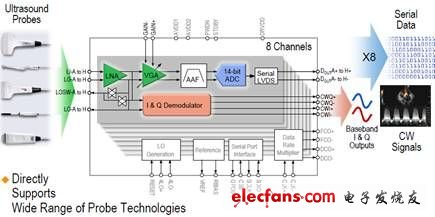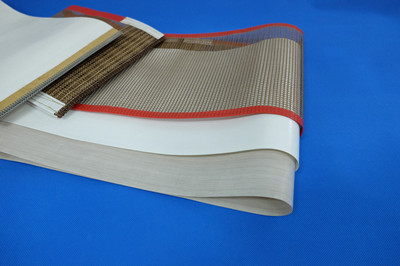Not long ago, iPad2 appeared in the expectations of Apple fans around the world, and is expected to continue to write Apple's legend. And just recently, a news that made the medical community not connected with Apple also have a relationship with Apple: The US Food and Drug Administration (FDA) first approved the use of Apple iPad / iPhone as an auxiliary product for medical imaging diagnostic radiology , Can be used to realize the interpretation of computed tomography (CT) and magnetic resonance imaging (MRI) results. In fact, the medical applications of the iPad are already there and are not limited to this. Among the more than 30,000 applications on the iPad, there are 504 medical categories (data as of September 2010).
For medical device manufacturers, especially portable healthcare equipment manufacturers, it is better to interpret this information as a threat to market competition as a reference to their own product strategies, especially Apple's excellence in the design of portable performance of iPad products. (Thickness of iPad2 is reduced by 33%, weight is reduced by 15%, and a charge can be used for 10 hours, standby for one month), because the portability of medical equipment, low power consumption has become a trend: the original only used in large hospitals Large medical equipment will show development trends of miniaturization, low cost, and ease of use to meet the needs of the establishment of primary medical institutions; with the intensification of the aging population, the application of home monitoring is also a development trend. In addition to the home blood glucose and blood pressure testing that has more applications now, it is expected that devices such as electrocardiograms will enter the home in the future. If you can grasp this trend like Apple in your product design, it will definitely take the lead.
At the International Integrated Circuit Exhibition held in Shenzhen in 2011, ADI (http: //), a leading global provider of high-performance signal processing solutions and medical equipment industry, exhibited multiple series of medical product solutions , Including the newly launched ADAS1000 ( http: // ) low-power, diagnostic-grade electrocardiogram (ECG) application analog front-end chip and the latest acclaimed eight-channel medical ultrasound analog front-end AD9278 (http: //) and AD9279 (http: //) . In addition to ADI's industry-leading high precision, these products and solutions have solved the problems of previous discrete solution design from within the chip with a higher degree of integration by relying on a deep understanding of medical system design and a precise grasp of customer needs. Faced with many technical challenges, the high integration and low power consumption characteristics have led the trend of the development of portable technology for medical devices.
ADAS1000 makes ECG smaller and more portable
ADAS1000 is the first product of ADI's newly launched fully integrated analog front end (AFE) series of chips that support ECG systems to achieve monitoring and diagnostic performance. The device also integrates pacemaker pulse detection and respiration measurement functions, as well as multiple Lead core ECG measurement and support functions, including lead disconnection detection and right leg drive, are all important features for high-performance ECG systems. The device can be effectively used in various ECG systems, including diagnostic electrocardiographs, bedside patient monitoring systems, dynamic monitors, and cardiac defibrillators. The high performance of ADAS1000 makes it very suitable for developing high-end diagnostic equipment that helps doctors more accurately diagnose various diseases affecting the human heart. At the same time, its high integration and low power consumption make it compatible with portable ECG products.
ADAS1000 AFE implements a complete ECG system in a single package. The signal chain BOM (bill of materials) based on this chip is significantly reduced, from the original up to 50 devices to only a single chip ADAS1000, plus several discrete devices It greatly simplifies the design of the ECG system and greatly reduces the board area. The left circuit of Figure 1 is the ECG analog front-end part (the dark circuit board on the right is the DSP main control function circuit), which uses two ADAS1000 chips (one of which is not patched) to achieve the expansion of the connection. As you can see from the figure, the circuit is very clean (in fact, additional devices and layout considerations have been added to the circuit to facilitate testing).

Figure 1: Development evaluation board based on ADAS1000.
Power consumption is the most important indicator of portable ECG. Usually patients need to carry a portable dynamic electrocardiogram monitor with them for a week or a few days in order to understand the heart's beating pattern and accurately determine the heart health status. Generally, at least 8 to 10 hours of equipment endurance should be guaranteed. The limited capacity of the commonly used lithium batteries presents a great challenge to the low power design of the system. The design engineer must adopt a solution with a lower power consumption budget. ADAS1000 has fully optimized low power consumption during design, and added design options that can achieve lower power consumption, which can maximize the balance of power consumption and performance. To reduce power consumption, you can easily disable any unused channels or features when using ADAS1000, you can turn off the signal acquisition channel, reduce the sampling rate, or use a different data frame rate, so that the lowest power consumption of a lead can be low To 11mW, the power consumption measured by the three leads is 14mW, and the operating power consumption measured by the five ECG electrodes is 19mW. In addition, the ADAS1000 uses a flexible power / noise adjustment option that can tolerate appropriate noise for specific applications to reduce power consumption or reduce noise at the expense of power consumption.
The fourth-generation eight-channel ultrasound receiver highlights the advantages of low power consumption and small size
Four years ago, Analog Devices introduced the AD9271 (http: //), the industry ’s first device to integrate a complete eight-channel ultrasound receiver on a single chip. ADI subsequently launched other eight-channel ultrasound receivers, including the AD9272 (http: //) for mid-to-high-end hand-push ultrasound systems, the AD9273 (http: //) for portable ultrasound systems, and support for high-quality continuous Wave (CW) Doppler processed AD9276 (http: //) and AD9277 (http: //). The new eight-channel ultrasonic analog front-ends AD9278 and AD9279, which were launched a year ago, once again rewritten the performance of the eight-channel ultrasonic receiving channel: with a variable gain range of 45dB, a fully differential signal path, active input preamplifier termination, and a maximum gain of 52dB And analog-to-digital converters with conversion rates up to 80MSPS.

Figure 2: The fully integrated solution greatly simplifies the ultrasound system design.
The product development path of AD927x reflects the technical development requirements of ADI's pursuit of high-performance, high-integration and low-power design of medical electronic equipment: AD9272 integrates LNA / VGA, ADC and anti-aliasing filter to overcome discrete solutions Possible matching design challenges between LNA / VGA, ADC and anti-aliasing filter devices and PCB layout, greatly reducing PCB size; AD9276 / 7 integrates CW Doppler modulator to help system design engineers further improve relative to discrete The noise performance of the solution; while the AD9278 and AD9279 devices integrate ADI's world-leading data conversion technology to achieve low-noise TGC (time gain control) mode performance, in addition to a high dynamic range I / Q demodulator, which can Reduce the power consumption and area required to implement continuous wave (CW) Doppler processing. In addition, the new eight-channel ultrasound receiver provides the highest level of output-equivalent large signal SNR (up to 6dB), which helps to improve the sensitivity of diagnostic ultrasound systems while reducing board space by up to 40%.
Both AD9278 and AD9279 are optimized for dynamic performance and low power consumption, making them suitable for applications requiring small package sizes. In CW mode, the AD9278 has ultra-low power consumption of 25 mW per channel, and the AD9279 provides low power consumption of 50 mW per channel. In TGC mode, the power consumption per channel of AD9278 at 40MSPS is only 88mW, and the power consumption of AD9279 at 40MSPS is only 139mW. The AD9278 eight-channel ultrasound receiver is designed for portable ultrasound systems, while the AD9279 is suitable for high-end and mid-range systems.
One-stop matching and technical support provide perfect solutions

Figure 3: ADI provides complete core devices for ultrasound solutions.
ADI, while launching these latest high-performance analog devices, is based on its complete analog and digital device products and technologies. It also provides engineers with a complete set of core supporting device selection recommendations for industry-leading performance, and provides a complete evaluation system based on these devices. For ADAS1000, supporting devices include Blackfin® DSP (Digital Signal Processor) (http: //) , single-chip USB isolator ADuM4160 (http: //) , four-channel digital isolator ADuM2401 (http: //) , 5kV isolation DC / DC converter ADuM6000 (http: //) , wireless ISM bandwidth transceiver ADF7023 ( http: //) , linear power regulator ADP150 ( http: // ) and ADP151 ( http: // 1 ) . The supporting components of the AD9278 and AD9279 octal ultrasound analog front ends include: low noise, high speed amplifier AD8021 ( http: // ) ; low power consumption, low distortion amplifier ADA4841-2 ( http: // ) ; 18 bit, 1MSPS PulSARR ADC AD7982 ( http: // ) ; 3.0 V ultra-low noise reference voltage source ADR433 ( http: // ) ; AD9516 clock generator ( http: // ) ; AD9520 clock generator ( http: // ) ; clock fan-out buffer ADCLK946 ( http: // ) and ADCLK846 ( http: // ) .

Figure 4: UM 300 patient monitor uses ADI dual-core DSP BF561 ( / adsp-bf561 ) , AD7190 ( / ad 7190 ) (ADC), AD8605 ( ) (Op amp) and AD8220 ( h / ad8220 ) (instrumentation amplifier) ​​and other key devices.
Medical electronics has always been one of ADI's key areas of focus. For medical imaging , patient monitoring, medical instrumentation, and consumer / home care products, ADI provides rich and comprehensive linear, mixed-signal, MEMS, and digital signal processing technologies. Four years ago, the company first established the Healthcare Division to focus on technology development of healthcare-related products and technical support to customers. Based on the world's leading analog and digital technologies, ADI products and technologies continue to win wide applications from global medical electronic equipment manufacturers, and its one-stop high-performance core device supporting capabilities and technical support capabilities have won praise from manufacturers.
Heavy weight belting products are available in multiple widths and styles. Most of the heavy weight fabrics are heavily coated with PTFE to ensure consistent and reliable release performance. Besides that, its outstanding performance in wear resistance, coefficient of friction and compression strength make it suitable for diverse applications as polymer casting, lamination, composite manufacturing, rubber curing.

PTFE Conveyor Belts,Fiberglass Conveyor Belt,Non Stick Conveyor Belts,PTFE Coated Conveyor Belt
TAIZHOU YAXING PLASTIC INDUSTRY CO., LTD , https://www.yaxingptfe.com